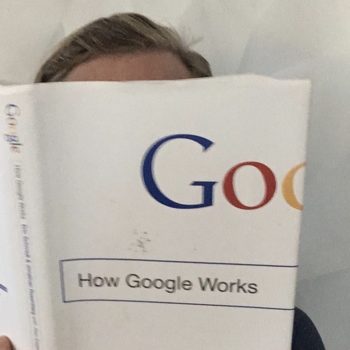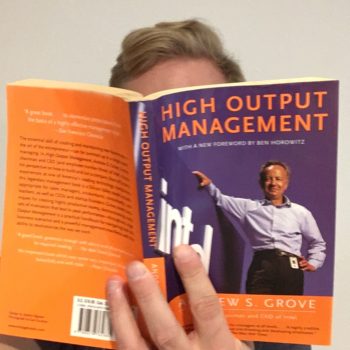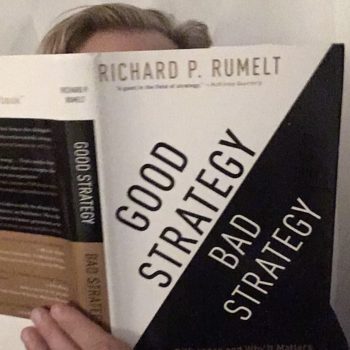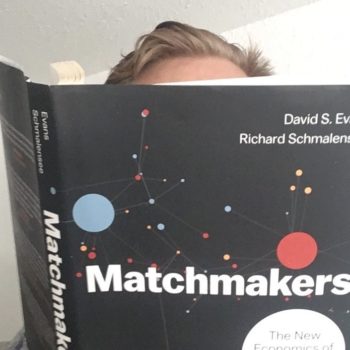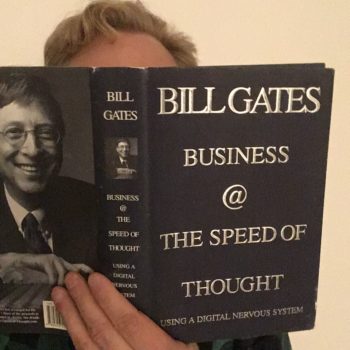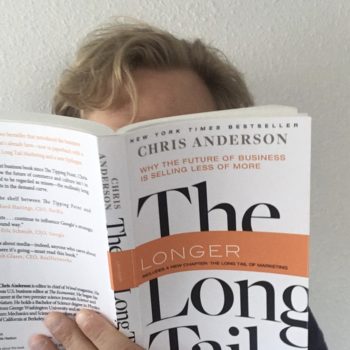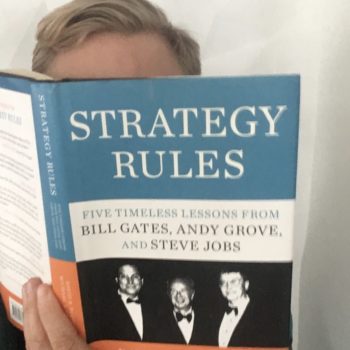
Strategy Rules
Five Timeless Lessons from Bill Gates, Andy Grove, and Steve Jobs
Categories:
CTO,
Engineering Manager,
Product Manager,
Startup Founder
How strongly do I recommend Strategy Rules?
8 / 10
Review of Strategy Rules
Modern software development is about building lovable products. The boom of UX. Seamless experiences.
We think about the iPod and iPhone as amazing, revolutionary products. And they were. But they also existed as part of larger strategies influenced by competitors and market shifts.
Strategy Rules is a good book for someone ready to look beyond the product.
Top Ideas in This Book
- Great strategy starts with a vision for the future
- Foster internal debate
- Look for inflection points and act immediately when you see one
- Build platforms and ecosystems, not just products
- Most people do not understand the potential of emerging technologies
- The fundmental rule of strategy is getting your competition to avoid investment in areas where you intend to invest heavily
- Fill the hard side of the marketplace first, usually the supply side
- Without a clear direction, you may become obsessed with minutiae that is irrelevant to customers and the business
- Some strategists start with tech, others start with customers. Both can work.
- Break down the wals between those who have knowledge and those who have organizational power
Great strategy starts with a vision for the future
What do you want the future to look like? Not six months from now, but years from now. That’s your vision.
Leaders translate vision into an actual strategy that manifests itself as activity within the company – building products, entering markets, and allocating resources.
Foster internal debate
Millions of people consider Steve Jobs a product visionary. Creative genius and dictator.
That is one way to manage. But most people aren’t Steve Jobs. More people are like Bill Gates and Andy Grove, benefiting from intense debate and rigorous analysis.
The book describes Gates at Microsoft executive retreats, where attendees would list and discuss nightmare scenarios that could break the company. Divergent thinking. War games. Experimentation.
All of these methods require vulnerability on behalf of the participants and acceptance of the unknown. Not everybody on your team is ready to participate in those conversations though, so you need to test the waters on a smaller scale first to assess their openness.
Look for inflection points and act immediately when you see one
Inflection points are transformational periods within an industry. Customer expectations radically change with inflection points.
The rise of the internet or the iPad revolution are large scale inflection points, but your own industry probably experiences smaller inflection points as well.
When you recognize an inflection point is coming, you must commit to change. Not later, but right now.
Failure to commit may result in an existential crisis for your company.
Build platforms and ecosystems, not just products
The authors write, “Great strategists, especially in technology markets, don’t just try to build great products or even great companies. Their goal is usually to build industry-wide platforms that bring together a broad ecosystem of partners engaged in complementary product and service innovation, as well as in related marketing, sales, service, and distribution.”
Gates and Jobs approached platforms and ecosystems differently. Gates went with open, modular pieces. Everyone laughs at the Steve Ballmer “DEVELOPERS! DEVELOPERS! DEVELOPERS!” video, but there’s a lot of truth to Ballmer’s word(s). Gates and Ballmer wanted platforms and ecosystems.
Of course, Jobs famously went the other route and kept Apple closed. Both can work when executed well.
In both cases, Microsoft and Apple also built the complementary products necessary to make their breadwinner successful. Microsoft built Office: Word, Excel, and PowerPowerpoint – bundled together in 1990. Apple built Weather and Notes apps into iOS, not to mention Pages, Numbers, and Keynote for OSX.
The real advantage to platforms is that even when products die, platforms remain. Platforms are much more difficult to overtake. Platforms provide a moat.
Most people do not understand the potential of emerging technologies
Focus groups and surveys provide little value, and perhaps negative value, when those being interviewed do not see the potential of a given technology.
Master strategists need to look past the user feedback and read between the lines. Look at the jobs to be done and how customers are currently solving those problems. Can your technology transform their solution?
The fundmental rule of strategy is getting your competition to avoid investment in areas where you intend to invest heavily
Andy Grove successfully encouraged their competitors to lie dormant while Intel invested heavily in manufacturing capacity, providing his Intel with a competitive advantage when striking deals later on.
Fill the hard side of the marketplace first, usually the supply side
Bill Gates says that Microsoft won the operating system wars because Microsoft worked directly with independent software companies and got them to write applications for Windows.
The supply side is often the hard side of the marketplace, named so because building density is much more difficult. There are far fewer developers building apps than there are people using those apps. You need both but the demand side will never come if there isn’t supply there. Build supply first.
Without a clear direction, you may become obsessed with minutiae that is irrelevant to customers and the business
Successful strategists avoid the trap of working on low leverage tasks and projects. Sometimes these are pet projects of particular interest to the leader. Pay attention to the details, but do so selectively and with great discipline.
Some strategists start with tech, others start with customers. Both can work.
Steve Jobs famously started with customer experience and worked backwards toward the technology. Conversely, Andy Grove and Bill Gates started with the technology and identified customer problems that the technology could solve. Both can work.
Break down the wals between those who have knowledge and those who have organizational power
People with the most knowledge are usually in the best position to understand what needs to be done. Get these knowledgeable people as close as possible to the people empowered to make decisions.
Extend this thinking both inside and outside your organization. Bill Gates frequently went outside of Microsoft to talk with technical experts to enrich his understanding and fill knowledge gaps.

